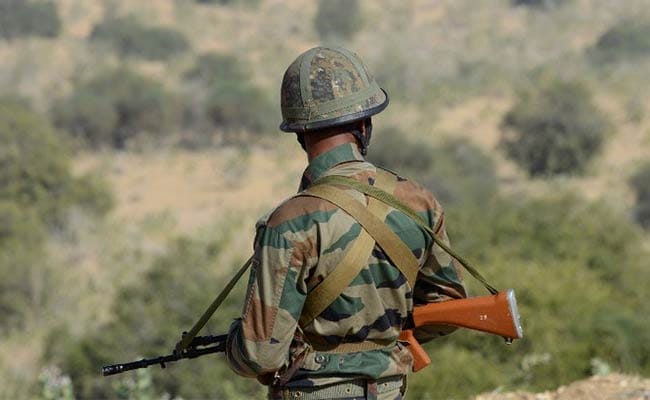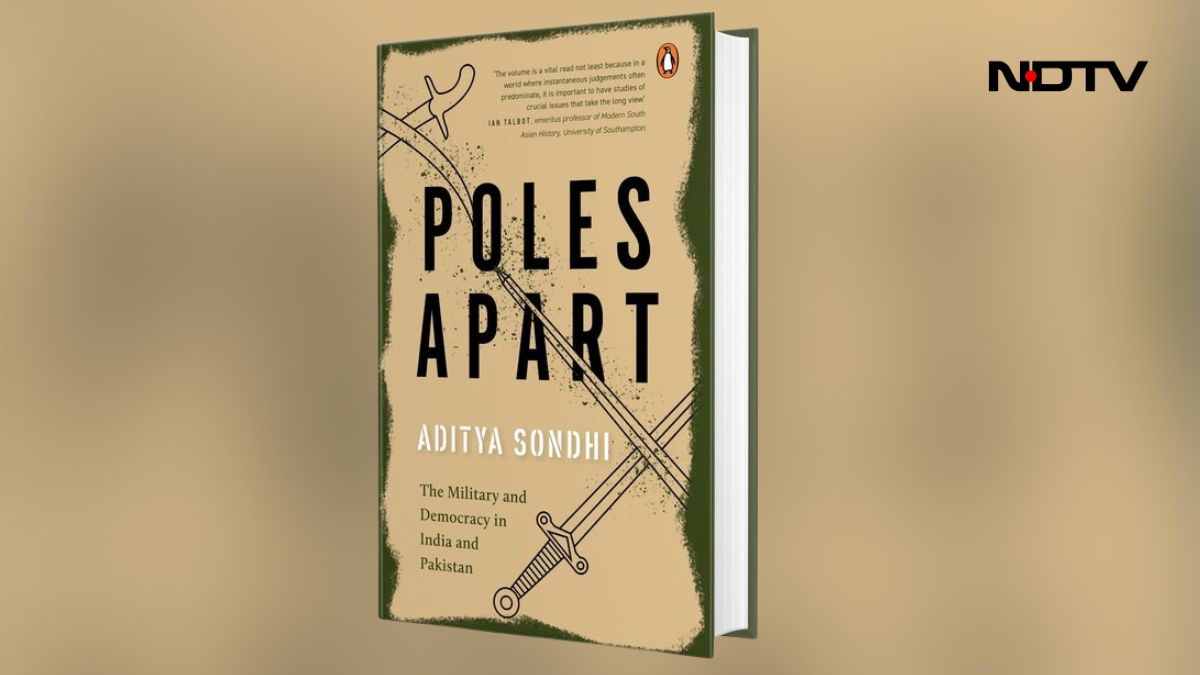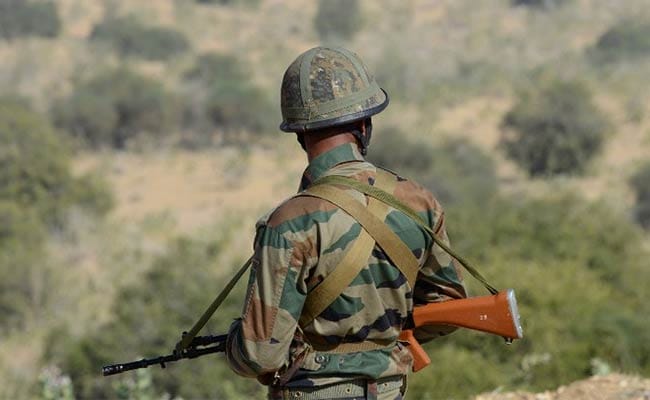
(The following is an excerpt from Aditya Sondhi's Poles Apart: The Military and Democracy in India and Pakistan, being published with the permission of Penguin Random House India. The book is a unique and original investigation of the comparative roles of the military, to study their influences on the growth of democracy in the two nations.)
AFSPA [Armed Forces (Special Powers) Act] represents a unique form of legislative plumbing where the army (comprised almost entirely of non-locals, in contrast to the local police force) is brought into internal areas in the country during peacetime to act in ‘aid of civil power', in what are not strictly military operations. Indian law per se does not recognize the idea of martial law, though Article 34 makes an oblique reference to it. Despite the absence of an express framework for the imposition of martial law, AFSPA permits military intervention over and above the role of the state police in certain states, at the discretion of the government. Much of the everyday exercise of individual rights of movement and expression comes to be regulated by the military. In its working, there is a significant devolution of executive power to the military commanders on the ground, which is unlike any police operation in peacetime. Anuradha Bhasin makes an interesting observation that alongside AFSPA, state legislation such as the Jammu and Kashmir Control of Building Operations Act, 1988, read with Section 3 of the J&K Development Act, 1970, which enable the deregulation of construction in declared ‘strategic areas', can ‘wreak havoc on private, state and forest land', basis compensation that is often illusory or even denied.

The cover of Aditya Sondhi's Poles Apart The Military and Democracy in India and Pakistan
Photo Credit: Courtesy: Penguin Random House
Ǫuite apart from the human rights violations that have come up in the context of AFSPA, the existence of such an enactment demonstrates a hybrid model, where the military exercises, which are essentially functions of the security services of the states, enter obliquely into the realm of governance. The effect of such ‘intrusions' into the democratic space has been significant in Pakistan, where the combination of legitimacy of operations, role in governance and landholding has driven the military into the heart of civilian democracy.
In India, the application of AFSPA creates a lopsided scenario where some states find the application of quasi-martial law. The discretion on whether to impose AFSPA or not lies with the central government and, in that sense, the state governments stand subordinated to the decision of the Centre, and the execution of that decision by the army. The effect is felt not only in the federal relationship between the Centre and the states but also in the democratic ethos of the states concerned.
Wartime vs Peacetime
There is a difference between rights violations in wartime and ‘peacetime', governed by domestic law and subject to judicial review by domestic courts. This is where the vesting of the armed forces with powers under AFSPA is unique in the context of its interface with democracy. The experiment has disclosed greater scope and possibly greater instances of human rights violations. It could be argued then that involving the armed forces in matters other than national security in the traditional sense could give rise to greater abuse of power.
It is incumbent to point out that the armed forces are often called upon to carry out other operations in peacetime too, such as flood relief, rescue operations, disaster management, peace marches and the like, which are performed with professionalism and efficiency. Nevertheless, the armed forces are legitimized with an expanded role under the AFSPA. This expanded role was not envisaged in the original text of the Constitution and was made explicit by the insertion of Entry 2A to the Union List in Schedule 7, providing for the ‘deployment of armed forces in any State in aid of civil power'.
What Dulat Observed
A.S. Dulat observes, ‘Yet the AFSPA is linked to the bigger question of how much power the army is wielding, and the movement in Kashmir has provided the army with an opportunity to expand its presence in J&K . . . many Kashmiris feel the army has turned the entire Valley into a cantonment.' After containing militancy in the 1990s, the army could well have returned to its customary role, yet it ‘did not want to cede the power it wielded as head of the unified command, and insisted that only it could be in charge'.
Some might term this as political misuse of the conventional role of the army, reducing civilian political space and, vice versa, in terms of the army getting accustomed to its new role and power. This diminishes democracy once the tipping point is crossed, and the army begins to camouflage itself as the civilian administration. While upholding the constitutionality of AFSPA, the Supreme Court opined that the Act does not supplant or displace civil power but only provides for deployment. This is technically a truism in terms of a reading of the law. However, the political power play and the overtones referred to above demonstrate that civil power is willy-nilly yielded to the military in real terms.
On Emergency
Lawyer and academic Surabhi Chopra, in her piece ‘National Security Laws in India: The Unraveling of Constitutional Constraints‘ alludes to the fact that under AFSPA, the executive’s decision to designate an area as unusually dangerous or volatile is unconstrained by threshold conditions or even guiding criteria. If the Indian government declared a part of India to be in a state of emergency under Article 356 of the Constitution, it would have to specify how long the emergency would last, and Parliament would review any declaration of emergency. By contrast, when an area is designated as ‘disturbed’ under AFSPA, this need not be reviewed by central or state legislatures. Such declarations can be, and have been, renewed by the executive repeatedly, effectively persisting for years at a stretch. As a result . . . laws like the AFSPA allow the Indian government to constrain rights in the way it could if it declared a constitutional emergency, while evading the constitutional checks that regulate a decision of such gravity.
She proceeds to make a more telling point: spatially limited laws also have the potential to reinforce or validate racial and ethnic prejudice against those who live in ‘disturbed' parts of the country. They can map easily on to regional or religious differences between the majority of the country, where they do not apply, and the areas where they do. When an area is designated as ‘disturbed', this might more easily allow law enforcement authorities to perceive its residents with a broad brush, conflating the peaceful majority with the minority of people who have adopted violent means for political ends.
This ‘prejudice’ has at times led to what are colloquially known as ‘fake encounters’, leading to orders by the Supreme Court of India to inquire into the extrajudicial killings in Manipur. While such encounters are more commonly associated with the police, the army has found itself stigmatized by the allegations after the invocation of AFSPA. Such acts of commission do not tie in with the otherwise secular, apolitical and professional reputation of the army. In conclusion, it can be said that the Indian Army has been drawn not just into politically sensitive operations such as Operation Blue Star or those of the IPKF and AFSPA, but equally so into politically sensitive situations such as the friction with Defence Minister Krishna Menon in 1959–61, the political ambivalence found at the time of the 1962 China War and the Emergency, among others. The political shortcomings in these and other scenarios discussed in the preceding chapters could well have triggered a more ‘interventionist’ approach by the military, but mercifully, the armed forces abstained from crossing any lines in the sand. The reasons for these are manifold, but in essence, one can conclude that the military in India respected constitutional space enough to let these situations work themselves out in a befitting manner.
(Disclaimer: The author and publisher of the book are solely responsible for the contents of the book or any excerpt derived therefrom. NDTV shall not be responsible or liable for any claims arising from the contents of the book including any claims of defamation, infringement of intellectual property rights or any other right of any third party or of law. Paragraph breaks and subheadings have been added by NDTV for readers’ ease.)

